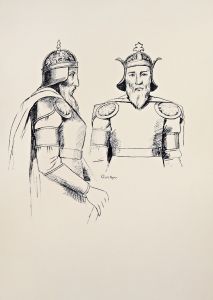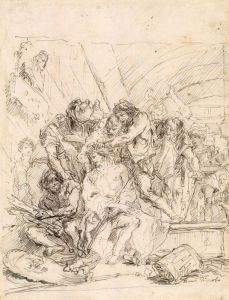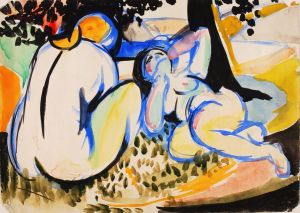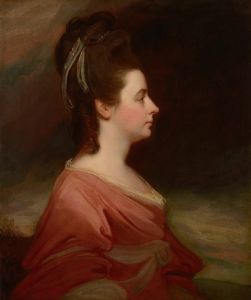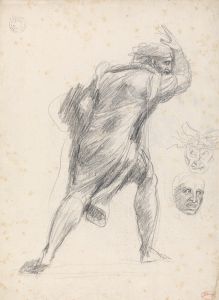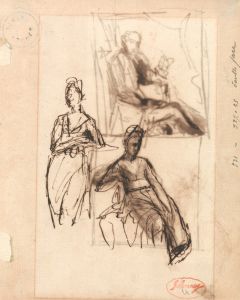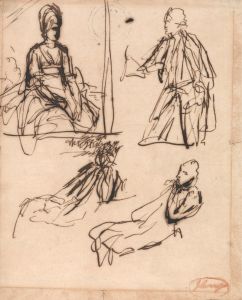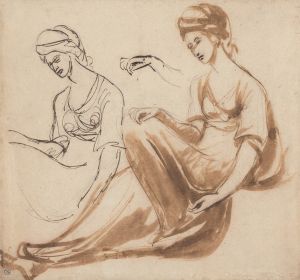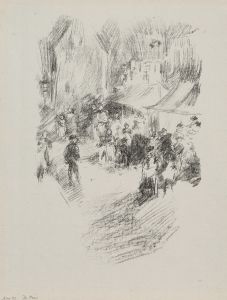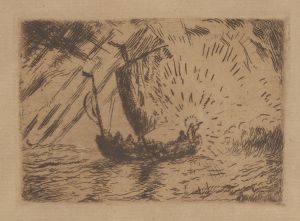
The Temptation of Christ
A hand-painted replica of George Romney’s masterpiece The Temptation of Christ, meticulously crafted by professional artists to capture the true essence of the original. Each piece is created with museum-quality canvas and rare mineral pigments, carefully painted by experienced artists with delicate brushstrokes and rich, layered colors to perfectly recreate the texture of the original artwork. Unlike machine-printed reproductions, this hand-painted version brings the painting to life, infused with the artist’s emotions and skill in every stroke. Whether for personal collection or home decoration, it instantly elevates the artistic atmosphere of any space.
"The Temptation of Christ" is a painting by the English artist George Romney, created in the late 18th century. George Romney, born on December 26, 1734, and died on November 15, 1802, was a prominent portrait painter in Britain, known for his depictions of contemporary figures and his involvement in the Neoclassical movement.
This particular painting, "The Temptation of Christ," illustrates a scene from the New Testament, specifically the temptation of Jesus by Satan, as described in the Gospels of Matthew, Mark, and Luke. The narrative recounts how Jesus, after fasting for forty days and forty nights in the desert, was approached by Satan, who tempted him three times. Each temptation was an attempt to divert Jesus from his divine mission, but Jesus resisted each one, reaffirming his faith and commitment to God.
Romney's depiction of this biblical episode is characterized by its dramatic use of light and shadow, a technique that enhances the emotional intensity of the scene. The painting captures the moment when Satan, often depicted as a dark, sinister figure, presents one of the temptations to Jesus. The contrast between the two figures is stark, with Jesus often shown as serene and resolute, embodying purity and divine strength, while Satan is portrayed with a more menacing and persuasive demeanor.
Romney's work is notable for its attention to detail and the expressive quality of his figures. The composition of "The Temptation of Christ" reflects his skill in conveying complex theological themes through visual art. The painting not only illustrates a pivotal moment in Christian theology but also serves as a testament to Romney's ability to interpret and visualize profound religious narratives.
Throughout his career, George Romney was highly regarded for his portraits of prominent individuals, including Emma Hamilton, who was one of his most famous subjects. However, his religious and historical paintings, such as "The Temptation of Christ," also demonstrate his versatility and depth as an artist.
Romney's influence extended beyond his lifetime, contributing to the development of British art in the 18th century. His works are held in various collections, including the National Gallery in London and other prestigious institutions. "The Temptation of Christ" remains an important piece within his oeuvre, reflecting both his artistic talent and his engagement with significant cultural and religious themes of his time.
In summary, "The Temptation of Christ" by George Romney is a significant work that captures a key moment in Christian scripture with dramatic and expressive artistry. It exemplifies Romney's skill in rendering complex narratives and his contribution to the Neoclassical movement in British art.





